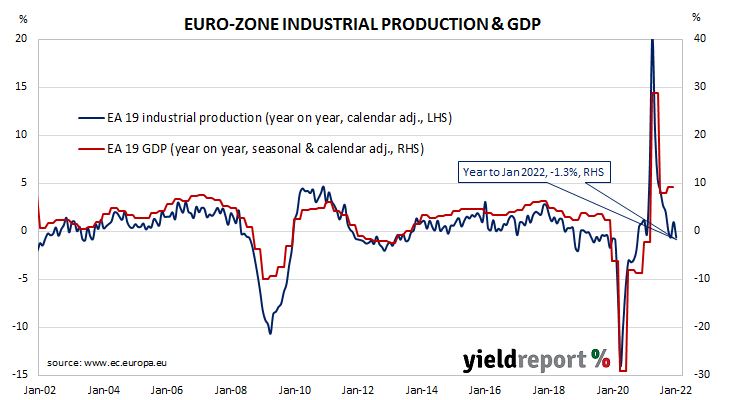Summary: Euro-zone industrial production flat in January; less than 0.3% expected; annual growth rate slows to -1.3%; German, French production up, down in Italy, Spain.
Following a recession in 2009/2010 and the debt-crisis which flowed from it, euro-zone industrial production recovered and then reached a peak four years later in 2016. Growth rates then fluctuated for two years before beginning a steady and persistent slowdown from the start of 2018. That decline was transformed into a plunge in March and April of 2020 which then took over a year to claw back. Production in more-recent months has generally stagnated.
According to the latest figures released by Eurostat, euro-zone industrial production remained unchanged in January on a seasonally-adjusted and calendar-adjusted basis. The result was lower than the 0.3% increase which had been generally expected and considerably less than December’s 1.3% gain after revisions. The calendar-adjusted growth rate on an annual basis sped up from December’s revised rate of +2.0% to -1.3%.
German and French sovereign bond yields rose noticeably on the day. By the close of business, the German 10-year yield had gained 12bps to 0.36% while the French 10-year yield finished 11bps higher at 0.83%.
Industrial production expanded in two of the euro-zone’s four largest economies. Germany’s production expanded by 1.3% while the growth figures for France, Spain and Italy were +1.6%, -3.4% and 0.0% respectively.


